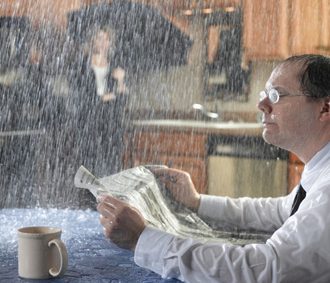A roof is a system of structures and layers that protect your house from the elements. If your roof is not waterproof and properly installed, rainfall and moisture can easily get through and cause major structural damage. A water-shedding or water-resistant roofing system repels water and keeps it outside of your home. In some cases, one style of roof performs better than another.
Orlando Roofing Company
Poor roof installations can result in more problems, so getting the job done correctly is important. Be sure to hire a local licensed company that can provide a material and workmanship warranty. Read client reviews online, contact friends and neighbors for referrals, ask as many questions as you need, and choose a trustworthy roofing company.
Water-Shedding Roof
Water-shedding roofs, also known as hydrokinetic roofs, allow water to shed or flow off efficiently. The slope of a roof determines the type of covering material that can be used and how it’s installed. Contractors will install water-shedding roofs on houses with a high slope, typically a ratio of at least 3:12. Using gravity, these roofs shed water more effectively.
When roofing companies install water-shedding roofs, they cover the deck with an underlayment which is a moisture barrier or membrane, often made of felt or synthetic materials; these are growing in popularity.
Most roof membranes and roofing materials are water-resistant, but not entirely waterproof. A water-resistant underlayment will protect a roof deck from moisture while allowing some water intrusion. A waterproof underlayment will effectively resist the infiltration of water. The waterproof underlayment is a self-sealing, peel-and-stick material that will seal around punctures made by staples or cap nails.
Water-Resistant Roofs
If your roof slope is lower than a ratio of 3:12, you have a low-slope roof, and you’ll have to install a water-resistant roof. Also known as hydrostatic roofs, these roofs are typically made of water-resistant materials such as metal or synthetic materials such as single-ply white TPO or PVC roofing membranes or rubber black EPDM roofing membranes.
If you have a low-slope or flat roof, due to the way they are built, you are more likely to experience leaks because standing water can degrade the roofing materials. To remove water, water-resistant roofing systems still require good drainage. If you’re experiencing water pooling on your flat roof for more than 2 days after a storm, have your roof inspected by a professional roofing company.
What type of roof is best for heavy rain?
Water-shedding roofs work best to prevent water pooling. In terms of materials, metal roofing is a fantastic choice for protecting your property against heavy rain. These roofs need almost no maintenance and can last for 50 years. Asphalt, slate, clay, and wooden roofs, when properly installed and maintained, are recommended too.
How do I keep water from falling off my roof?
You can keep water from falling off your roof by taking some precautions. Be sure to flush drains and clean gutters and downspouts. Replace any if they are leaking. You can add some gutters and downspouts. Check for appropriate drainage. Perform a timely inspection looking for signs of wear and tear and replace your roof if needed.
Free Roof Inspection
Castle Roofing Group is your local Orlando roofer. We are known for our fair pricing and excellent roof work and offer one of the best financing rates for water shedding of water-resistant roof installations in the area. We are a trusted Orlando roofing company providing the highest quality for water shedding or water-resistant roof installation since 2012. Contact us today for a free estimate online or at (407) 477-2823.


